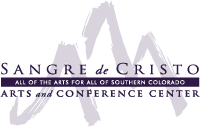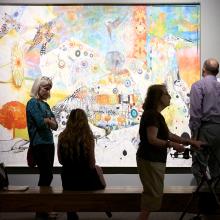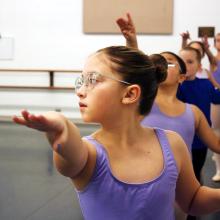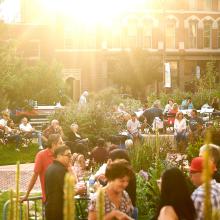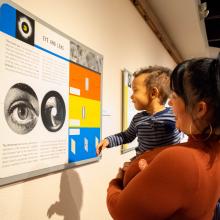
Instructor: Piper Murphy
Saturdays, 3:30PM - 5:00PM - 9 Day Series
Description: This class is for all levels, no experience working with glass required. Curriculum is geared toward 6th-8th grade. Across 9 consecutive Saturdays, students will learn and explore elements and principals of photography. Students are welcome to take the entire series, or to sign up for any individual lesson(s) that pique their interest. Students are welcome and encouraged to bring their own cameras. A limited number of class cameras will be available for class use.
Topics include:
Week 1: The Theory of Photography; Students will engage in class discussion about how cameras work, including topics such as aperture, exposure, lighting, point-of-view, and more. Students will be encouraged to manipulate their cameras in manual modes to explore and apply these topics.
Week 2: Point of View Activity; Students will take a photo of one item from several perspectives and angles, such as close-ups, long shots, bird's eye view, worm's eye view, medium shots, etc. Once photos are printed, students will make a collage showing the perspectives they captured.
Week 3: "Clone Wars"; Students will take photos of either themselves, friends, family, or classmates in one location. Their subject will pose in different scenarios and locations, and then students will edit the "clones" into one singular photo so that it looks like their subject has multiplied.
Week 4: A "Day in the Life" Project; While supervised, students will spend the class time taking candid photos of anything they want. The idea is to capture the natural perspective of everyday life which is not staged or posed. Examples may include a happy dog, a group of people conversing, a bird perched in a nearby tree, a friend smiling at a situation going on in the background, or the sun setting behind a building.
Week 5: ABC's Page; While supervised, students will explore the museums and campus to photograph representations of all the letters of the alphabet. Images will be then edited into a single grouping to represent a photographic alphabet chart. For example, a tree branch that looks like the letter "Y" or an arch in a building which resembles the letter "U".
Week 6: Toy Adventure; Students will choose a toy or personal item they have brought from home to use as their model for the day. The museum will also have items students can select from if they prefer. Students will then take photos of their chosen figure in different scenarios and locations while practicing and applying different angles, techniques, and perspectives. The photos can tell a narrative story of the toys' or items' "adventure" or just be random; whichever the student prefers.
Week 7: 5 Favorite Things; Students will choose 5 of their favorite things, whether they are physical, abstract, or intangible, and photograph those things in a what that frames the "things" in such a way as to convey emphasis and importance.
Week 8: Ready, Set, Jump!; Students will try and capture movement and/or items in motion in their photos, for example, shots that are fast-moving like jumping, running, or dropping an item like a ball.
Week 9: Make Your Own Camera; Students will build their own camera out of cardboard cylinders and practice using aperture, depth, and range. This product will use light-sensitive photo paper. Photos develop immediately and students are able to take the camera home.
Parents/guardians are required to sign-in and sign-out students. Students will only be released to adults indicated in their registration. For unforeseen/last minute pick-up changes, please call 719-295-7200.
Students may be dropped off no more than 15 minutes before class and no later than 15 minutes after their last class.
